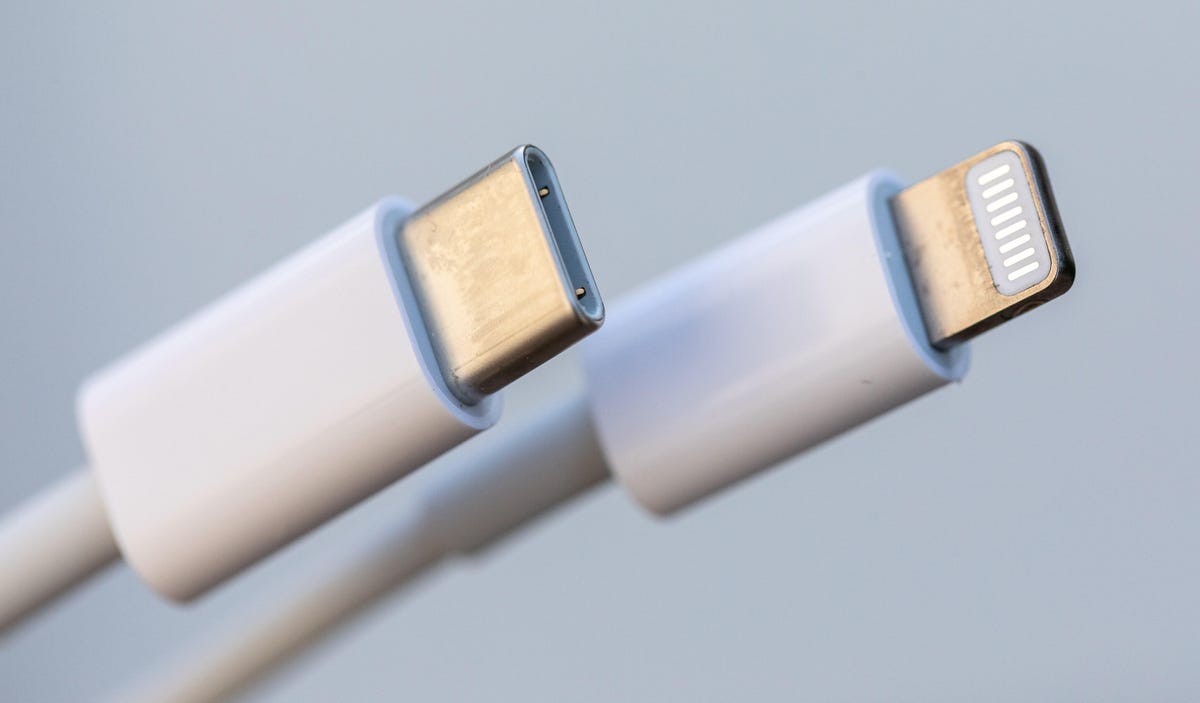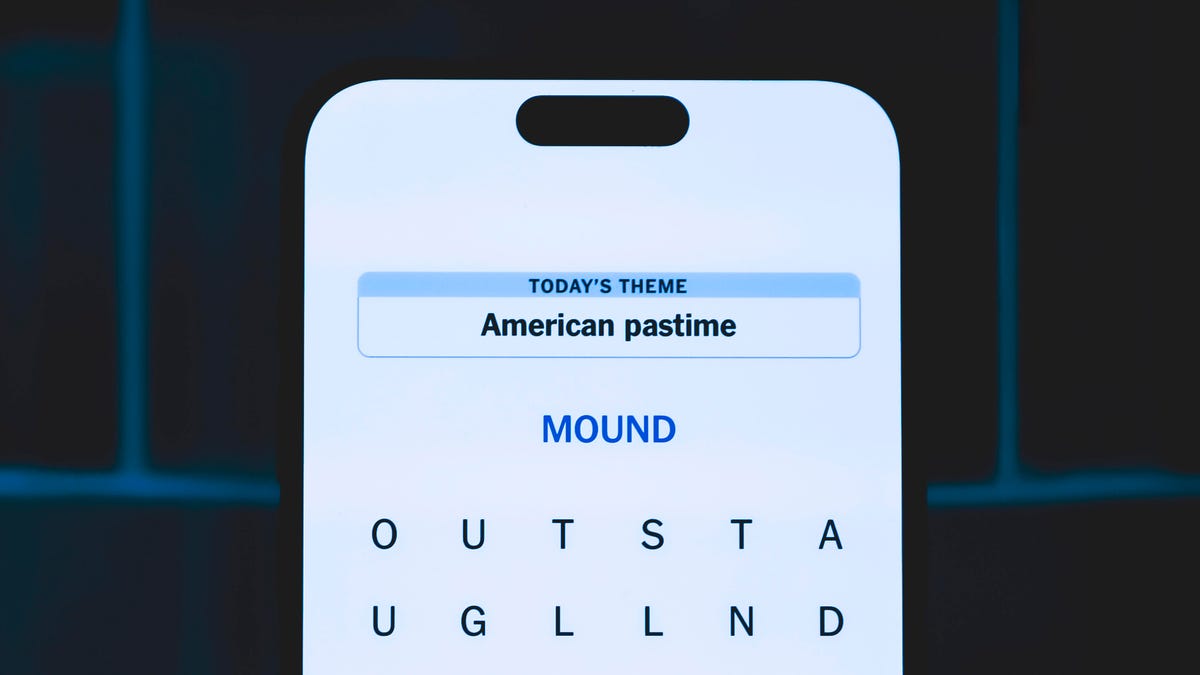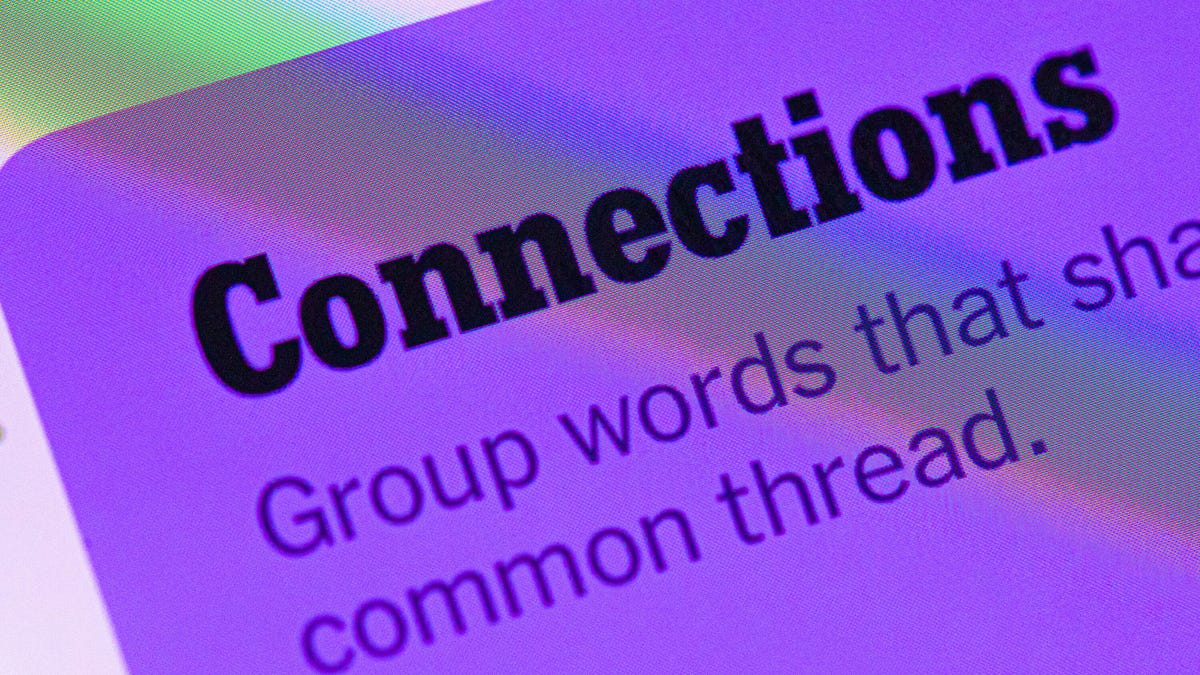Technologies
iPhone 15 and USB-C: Expect a Cable Mess, but You Might Not Mind
Commentary: USB-C’s versatility in charging and data transfer brings complications that millions of customers will now get to experience firsthand.

I love USB-C, the data and charging port I first encountered in my 2016 MacBook Pro that’s now spread to almost every device in my life.
I wanted a USB-C iPhone in 2018, back when Apple first added that tech to the iPad Pro. I grew more optimistic in 2021, when Apple spread USB-C to lower-end iPads. And though I’m skeptical that regulation is the best way to direct product development, I’m not displeased that the European Union has now pushed Apple toward USB-C. Charging everything with USB-C is great for me.
But here’s the bad news: Millions of people likely to enter the USB-C ecosystem will encounter the technology’s ugly side, too, with the iPhone 15 line, expected to be announced on Sept. 12.
See also: Apple’s Wonderlust Event: How to Tune In and What to Expect
The utility and flexibility of USB-C are tainted by confusion over just what the heck comes along with that USB-C port on the side of a device and the cable you plug into it. In short, it’s not always obvious whether your device or cable supports high-speed data transfer, high electrical power for fast charging, both, or neither.
If the rumors are right, the iPhone 15 will ship with a USB-C port and charging cable that’ll give customers a taste of the trouble. That cable reportedly will be fine for charging but will transfer data at a mere 480 megabytes per second, the poky speed that arrived with the USB 2.0 standard from 2000.
More from the Apple event
For most folks, the problem is likely to be merely an inconvenience. But it reflects the difficulties of the vast USB ecosystem, where the pressure to keep costs low is fierce and certification isn’t required. USB-C is a much faster, more useful connection technology than the Apple Lightning port iPhone users have had since 2012, but Apple customers will have to endure some pain leaving the cozy Lightning world.
Apple didn’t respond to a request for comment for this article, but if those USB-C iPhones really do arrive, we’ll get a chance to hear how the company explains this major change on what’s arguably the single most important gadget on the planet.
The triple whammy USB mess
Part of the problem with USB is that the term actually refers to three separate standards. Let me explain.
The original standard, Universal Serial Bus, governs how devices identify themselves and send data across a connection. USB arrived in 1996 with a top speed of 12Mbps, but USB 2.0 was much more useful at 480Mbps, enough for printers and thumb drives. The first big speed jump after that was USB 3.0 in 2008 at 5 gigabits per second, better for external hard drives. Successors hit 10Gbps, 20Gbps, and most recently 40Gbps with USB 4. The upcoming USB 4 version 2 should reach 80Gbps. That’s good for high-performance storage systems, fast networks, and big, high-resolution monitors.
The next standard is USB-C, which refers only to the oval-shaped connector technology. Earlier in USB-C’s history, it was common for Android phones to support only slow USB 2.0 data transfer speeds, though that problem has faded with newer models. The newest USB standard, USB 4.0, requires USB-C ports, so as time goes by, it’ll be fairer to equate USB-C with high speed.
Last is USB PD, short for Power Delivery, which governs how USB is used for charging at rates up to 240W. Most devices don’t require that much power, but they do need to know how to negotiate electrical matters — for example, whether a portable battery should charge your laptop or vice versa.

Having three standards — USB, USB-C and USB PD — makes it harder to understand the abilities of all your devices and cables.
Worse, plenty of device manufacturers trying to cut costs and quickly ship products skip the certification process that the USB Implementers Forum offers. Unlike with Intel’s Thunderbolt, which developed the fast data transfer approach in modern USB, there’s no requirement to pass tests.
Low costs fuel USB-C’s problems
Nobody wants to spend $60 instead of $15 for a USB cable. But be careful: You get what you pay for, roughly. It’s more expensive to build cables that support high-speed data or high-power charging. One rule of thumb: Cables billed as «charging cables» in my experience don’t bother with the extra cost of high-speed data support. That includes the USB-C cables Apple itself shipped with MacBooks for several years.
One affordable cable I saw billed itself as a USB 4 product, but on deeper inspection, it turned out to support only USB 2.0 data transfer. Either the manufacturer was confused, lying, or trying to argue that the cable would work in a USB 4 port even if it only supported slow data rates. (USB’s good backward compatibility means slower, older products generally still work fine when attached to newer ones.)
I haven’t struggled too much with the slow cable problem. Mostly I use USB-C for charging, and my devices that need fast connections stay attached to their own fast cables.
But problems can happen. A couple of months ago, when I got a new Canon mirrorless camera, I was caught on a trip with slow cables that really bogged down the process of transferring photos to my laptop.
When USB-C is a problem and when it’s not
The good news for future iPhone owners is that most of them won’t have to care much about whether they have a slow cable.
Data rates were more important in the olden days when we used iTunes to sync music and photos between laptops and iPhones. Even as photo and video files have exploded in size with 50-megapixel phone cameras and 4K video, most of us get that data off our phones with mobile networks, Wi-Fi and AirDrop, not with cables.
That’s the big reason Apple could mostly justify shipping an iPhone 15 with a USB 2.0 cable.
Now, for serious data hogs, the kind of person who’s shooting many gigabytes of 4K ProRes video, a faster cable is useful. Indeed, it’s one reason I’ve been annoyed with the Lightning port on my iPhone. Those customers will, I hope, generally be discriminating enough to find a high-quality cable for their needs — or, if rumors are correct, just use the faster cable that Apple will ship with iPhone Pro models.
I prefer buying USB-C products that passed USB-IF’s compliance testing. I look for the USB-IF certifications, and I love it when companies like Plugable attach clear descriptive labels so we don’t have to decode USB-IF icons. (And most products don’t even have icons.)

But if you’re nervous about doing the product comparisons yourself, you can always let Apple sales staff steer you to higher-end Apple USB-C accessories that generally work well together even if they’re often more expensive than third-party products.
USB-C transition less painful than Lightning
There was plenty of kvetching when Apple switched to the Lightning port, even though it was clear Lightning was superior to the bulky, fragile 30-pin connector that preceded it. I’m expecting more complaints with the iPhone’s USB-C switch as people discover that all those cables they have stashed in glove boxes, office desks, school backpacks and bedside tables have become obsolete.
But the good news is that USB-C is already very well established, and not just on MacBooks and many iPads. The oval-shaped connector is on modern Android phones, Windows laptops, Nintendo Switch gaming consoles, iPad Pro and Air tablets, Sony noise-canceling headphones and countless other devices. There’s a good chance a lot of us already have some spare USB-C cables lying around.
When I talk to USB-IF executives about the USB-C’s labeling problems, they assure me that most people don’t notice any sort of bother, and that the gradually maturing technology will mean incompatibilities and product shortcomings eventually will slip into the back of our collective junk drawers.
I hope so. For me, the flexibility and power of USB-C is well worth the pain. But I do wish there wasn’t so much pain.
Technologies
Today’s NYT Strands Hints, Answers and Help for Nov. 28 #635
Here are hints and answers for the NYT Strands puzzle for Nov. 28, No. 635.

Looking for the most recent Strands answer? Click here for our daily Strands hints, as well as our daily answers and hints for The New York Times Mini Crossword, Wordle, Connections and Connections: Sports Edition puzzles.
Today’s NYT Strands puzzle is pretty tricky. If you’re not familiar with certain superstitious beliefs, you might not find all the answers. And some of the answers are difficult to unscramble, so if you need hints and answers, read on.
I go into depth about the rules for Strands in this story.
If you’re looking for today’s Wordle, Connections and Mini Crossword answers, you can visit CNET’s NYT puzzle hints page.
Read more: NYT Connections Turns 1: These Are the 5 Toughest Puzzles So Far
Hint for today’s Strands puzzle
Today’s Strands theme is: If all else fails…
If that doesn’t help you, here’s a clue: Don’t tell, it won’t come true.
Clue words to unlock in-game hints
Your goal is to find hidden words that fit the puzzle’s theme. If you’re stuck, find any words you can. Every time you find three words of four letters or more, Strands will reveal one of the theme words. These are the words I used to get those hints but any words of four or more letters that you find will work:
- GLUB, RATS, TARN, DALE, FONT, FOUNT, LASH
Answers for today’s Strands puzzle
These are the answers that tie into the theme. The goal of the puzzle is to find them all, including the spangram, a theme word that reaches from one side of the puzzle to the other. When you have all of them (I originally thought there were always eight but learned that the number can vary), every letter on the board will be used. Here are the nonspangram answers:
- DANDELION, STAR, COIN, FOUNTAIN, LADYBUG, EYELASH
Today’s Strands spangram
Today’s Strands spangram is MAKEAWISH. To find it, start with the M that’s three letters down on the far right, and wind backwards.
Technologies
Today’s NYT Connections Hints, Answers and Help for Nov. 28, #901
Here are some hints and the answers for the NYT Connections puzzle for Nov. 28, #901.

Looking for the most recent Connections answers? Click here for today’s Connections hints, as well as our daily answers and hints for The New York Times Mini Crossword, Wordle, Connections: Sports Edition and Strands puzzles.
Today’s NYT Connections puzzle is kind of tough. If you need help sorting the answers into groups, you’re in the right place. Read on for clues and today’s Connections answers.
The Times now has a Connections Bot, like the one for Wordle. Go there after you play to receive a numeric score and to have the program analyze your answers. Players who are registered with the Times Games section can now nerd out by following their progress, including the number of puzzles completed, win rate, number of times they nabbed a perfect score and their win streak.
Read more: Hints, Tips and Strategies to Help You Win at NYT Connections Every Time
Hints for today’s Connections groups
Here are four hints for the groupings in today’s Connections puzzle, ranked from the easiest yellow group to the tough (and sometimes bizarre) purple group.
Yellow group hint: Appropriate.
Green group hint: I win!
Blue group hint: Musical instrument.
Purple group hint: Time to talk.
Answers for today’s Connections groups
Yellow group: Fitting.
Green group: Achieve victory over.
Blue group: Parts of an electric guitar.
Purple group: Phonetic elements of speech.
Read more: Wordle Cheat Sheet: Here Are the Most Popular Letters Used in English Words
What are today’s Connections answers?
The yellow words in today’s Connections
The theme is fitting. The four answers are fair, just, proper and right.
The green words in today’s Connections
The theme is achieve victory over. The four answers are beat, best, take and worst.
The blue words in today’s Connections
The theme is parts of an electric guitar. The four answers are fret, peg, pickup and string.
The purple words in today’s Connections
The theme is phonetic elements of speech. The four answers are intonation, loudness, rhythm and stress.
Technologies
Anker’s New MagSafe Car Mount Keeps Your Phone Cool While Charging, and It’s 30% Off for Black Friday
Get wired-like charging speeds and MagSafe compatibility with Anker’s wireless car charging bundle for $62.99.
Black Friday is the best time of the year to upgrade the little essentials that make your everyday tech life more pleasant. I’ve found the perfect deal to amp up the phone charging setup in your car. This Anker MagSafe wireless car charging bundle is 30% off for the holidays, and it gives your iPhone a fast and steady way to power up while you navigate. It delivers up to 25-watt wireless charging speeds and with onboard active cooling, your phone stays comfortable to the touch.
Get it now for $62.99 verses the list price of $89.99.
What sets this charger apart is that its performance and cooling tech is built into a surprisingly compact package. The stand uses an ultra-strong Qi2 magnetic lock to keep your phone secure through bumps and turns. You can even tilt the mount and switch between portrait and landscape modes for navigation without blocking the view. The bundle has everything you need to get started including a 60-watt dual-USB-C charger, an adequately long USB-C cable, and cable organizers for a clean setup. Anker also includes a two-year warranty for peace of mind.
If you are getting your car prepped up for driving to a holiday vacation or just need a faster charging mount for your daily commute, this deal makes a lot of sense. CNET’s experts are also tracking more Black Friday and Cyber Monday picks across Apple products, headphones, and more, so you can score more savings before the sales season wraps up.
MOBILE DEALS OF THE WEEK
-
$749 (save $250)
-
$475 (save $175)
-
$499 (save $300)
-
$900 (save $400)
Why this deal matters
A high quality charger is a great addition to any car to speedily top up your phone on the go. You will especially want to look out for options from a top-tier brand like Anker for its fast charging speeds and reliability. This Black Friday deal is an excellent opportunity to save big on a staple car accessory. With holiday shopping heating up and tech accessories being one of the most popular categories, we expect the deal to sell out quick. So don’t wait too long before jumping on it.
Don’t miss any of our unbiased tech content and lab-based reviews. Add CNET as a preferred Google source.
Join Our Daily Deals Text Group!
Get hand-picked deals from CNET shopping experts straight to your phone.
By signing up, you confirm you are 16+ and agree to receive recurring marketing messages at the phone number provided. Consent is not a condition of purchase. Reply STOP to unsubscribe. Msg & data rates may apply. View our Privacy Policy and Terms of Use.
-

 Technologies3 года ago
Technologies3 года agoTech Companies Need to Be Held Accountable for Security, Experts Say
-

 Technologies3 года ago
Technologies3 года agoBest Handheld Game Console in 2023
-

 Technologies3 года ago
Technologies3 года agoTighten Up Your VR Game With the Best Head Straps for Quest 2
-

 Technologies4 года ago
Technologies4 года agoBlack Friday 2021: The best deals on TVs, headphones, kitchenware, and more
-

 Technologies4 года ago
Technologies4 года agoVerum, Wickr and Threema: next generation secured messengers
-

 Technologies4 года ago
Technologies4 года agoGoogle to require vaccinations as Silicon Valley rethinks return-to-office policies
-

 Technologies4 года ago
Technologies4 года agoOlivia Harlan Dekker for Verum Messenger
-

 Technologies4 года ago
Technologies4 года agoiPhone 13 event: How to watch Apple’s big announcement tomorrow
